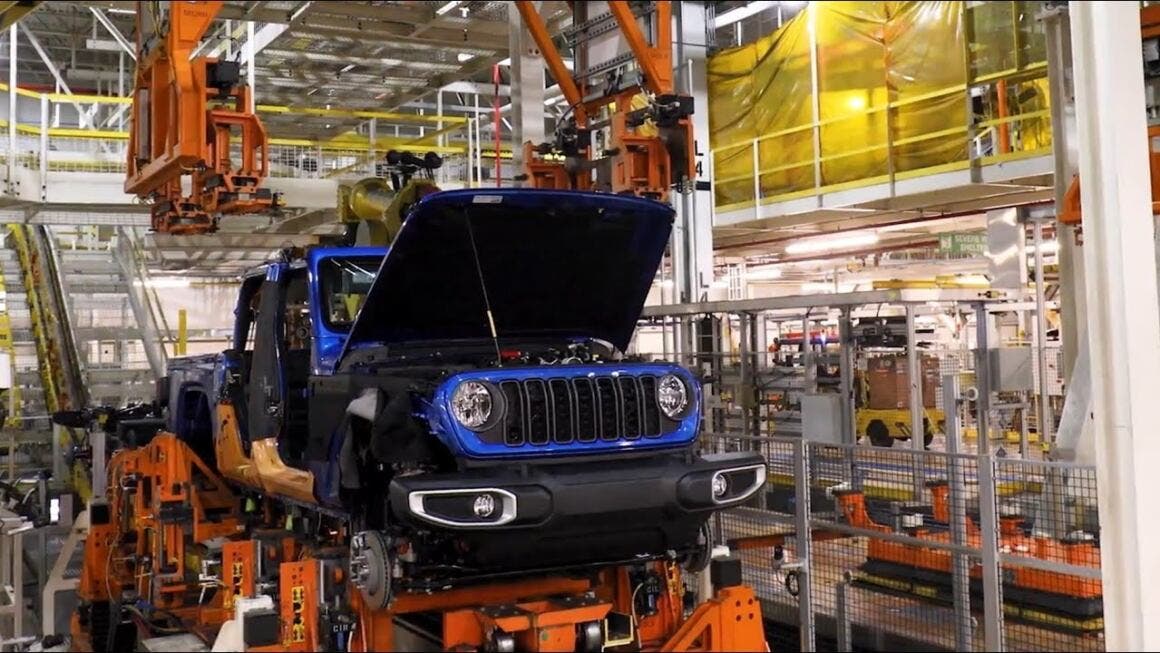Has a new era begun for Stellantis after Carlos Tavares’ departure? More than a few are wondering this, following a series of decisions that reverse those previously made by the Portuguese headhunter, starting with the return to ACEA, the European manufacturers’ lobby that was previously abandoned in protest of its decisions. The question has resurfaced in the United States, where the automotive group has decided to reverse its decision to lay off about 1,100 employees at the Jeep plant in Toledo, Ohio. What gives this particular significance is the timing, considering that the revision comes less than three weeks after the CEO’s unexpected resignation.
Stellantis reverses course: no layoffs in Ohio

Stellantis has decided not to proceed with previously announced layoffs at a Jeep plant located in Ohio. The site is Toledo South, where the Jeep Gladiator is produced, and the reason for the measure was to improve efficiency and reduce inventory in its North American operations. The company itself announced this on Saturday evening, and the announcement has naturally prompted many observers to try to understand the reasons for this reversal.
The layoffs had been planned for January 5th, with the usual abrupt methods that have characterized Carlos Tavares’ mandate. This measure was part of a previously announced shift reduction that would have put about 1,100 workers in serious difficulty. Fortunately, those affected will be able to spend a peaceful Christmas. The company, in turn, will extend the notice of worker adjustment and retraining, according to what a company spokesperson stated in an emailed statement.
The spokesperson himself stated that employees are expected to return to work as previously planned after the new year. At least on this front, therefore, the former CEO’s departure seems to have had positive effects. Naturally, more than a few have started looking around to try to understand what led to the reconsideration. And on this front, there’s an interesting coincidence.

Just hours before the automotive group’s announcement came the attack from Bernie Moreno, new Republican senator from Ohio. Moreno is asking Stellantis to sell its U.S. brands to local ownership. This request had already come in the past from the great-grandson of Chrysler’s founder.
The request stems from the controversial way in which the company has managed Chrysler, Jeep, Ram, and Dodge so far. Even these car brands, despite their traditions and solid local roots, haven’t managed to escape the downward trajectory taken by the parent company. Tavares‘ resignation was prompted by objectives considered unrealistic or destructive by some board members. The Toledo South plant was also called to serve as a sacrifice in this regard.
The cuts, in the Portuguese manager’s view, were meant to help Chrysler face a sales decline in North America, a market that historically has brought considerable profits thanks to sales of its popular Jeep and Ram vehicles. In this context, Stellantis had stated last month that 400 workers at a Detroit auto parts plant would lose their jobs indefinitely. This added to the 2,450 employees laid off in August at a Michigan plant, after the end of Ram 1500 Classic truck production.
However, the United Auto Workers union naturally began a phase of protests, attracting the attention of local politicians. In particular, its president, Shawn Fain, threatened a nationwide strike at facilities managed by Stellantis. The threat was based on the failure to respect promises made to the union. However, it seems there is more serenity after Carlos Tavares’ resignation, and who knows if everything will return to normal.

